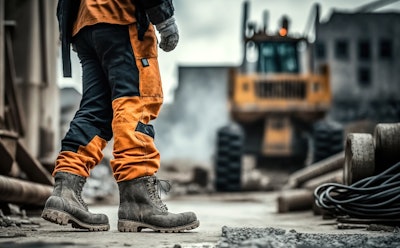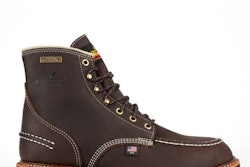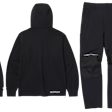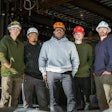
Overlook Boots points out that according to Occupational Safety and Health Administration (OSHA), workers must wear protective footwear when working in places where a danger of foot injuries due to falling or rolling objects is present.
In differentiating between different boot types – steel toes, alloy toes, composite toes and nano composite toes, Thorogood points out each offers different protections.
Composite Toe Boot Features and Materials
Composite toe boots are typically made from a strong non-metal material including Kevlar, carbon fiber, carbon nanotubes, plastic, or fiberglass.
Some modern safety toes are manufactured using advanced nanotechnology, according to Thorogood. Nano composite toes are so named for the carbon ‘nanotubes’ of which they are made: tiny carbon structures arranged into a beehive pattern and wrapped into a cylinder 10 to 50 nanometers in diameter. For perspective: one nanometer is to a tennis ball what a tennis ball is to the Earth, Thorogood points out.
It is significant to consider that the materials used in composite toe boots by some manufacturers may be of lower quality, so it’s important to choose protective footwear that meets ASTM standards.
Thorogood points out that carbon nanotubes when combined with fiberglass resin create some of the strongest and lightest safety toes on the market that meet ASTM standards. Nanotechnology enables the toecap wall to be thinner, offering extra toe room in and a more comfortable fit.
Safety Compliance
ASTM-compliant safety footwear is marked with a code indicating the hazards for which the boot has been tested. ASTM F2412 is a standard test method for foot protection determining impact and compression resistance. Impact testing considers what happens when something heavy falls on the shoe. Compression testing looks at what happens when something heavy rolls onto the shoe.
ASTM F2413 is a standard specification for performance requirements for safety toe cap footwear, which specifies that the toe cap must be tested to resist impact and compression. Additionally, there are tests against punctures, electrical shock, and other hazards.
Overlook Boots points out since all protective-toe footwear must pass the same impact and compression test in ASTM-compliant safety-toe footwear, the toe cap will deliver a sufficient level of protection regardless of the material of which they are made. In explaining the difference between composite toe versus steel toe boots, Grainger notes that comfort is another consideration and is tied into the weight of the boot. While many factors come into play, Grainger recommends seeking out footwear using the latest advanced materials for its sole, upper and insulation.
Performance on Jobsites
Since composite toe caps need to be somewhat thicker than steel counterparts to offer a similar protection level, the shoe or boot may seem larger and more bulbous, affecting how the footwear feels, the brand points out. In considering whether composite toe boots are better in cold weather, Grainger makes the point that in theory they are in that plastic – which is used in composite toes – is a good thermal insulator that less readily transfers heat, according to the University of Illinois at Urbana-Champaign Department of Physics.
Since composite toe boots don’t conduct heat, cold, and electricity, it makes them ideal for those who work around sources of electricity, fire, and extreme hot or cold weather conditions, notes Overlook Boots.
Many manufacturers offer composite toe boots that are insulated and waterproof, notes Grainger. Thorogood notes composite toe boots – especially nano toes – are lighter than traditional steel toe caps.
As long as the boots don’t have a steel shank, composite toe boots make passing through secure job sites and metal detectors easier. The downside of composite toe boots is that they are not typically as impact resistant as metal options, Thorogood points out.
Occupations that typically lean toward composite toe boots include electricians – especially given the boots are poor conductors of electricity – as well as engineers, plumbers, welders, architects, and project managers. These occupations require workers spend long days on their feet, but they are usually not working with very heavy machinery day in and day out.















